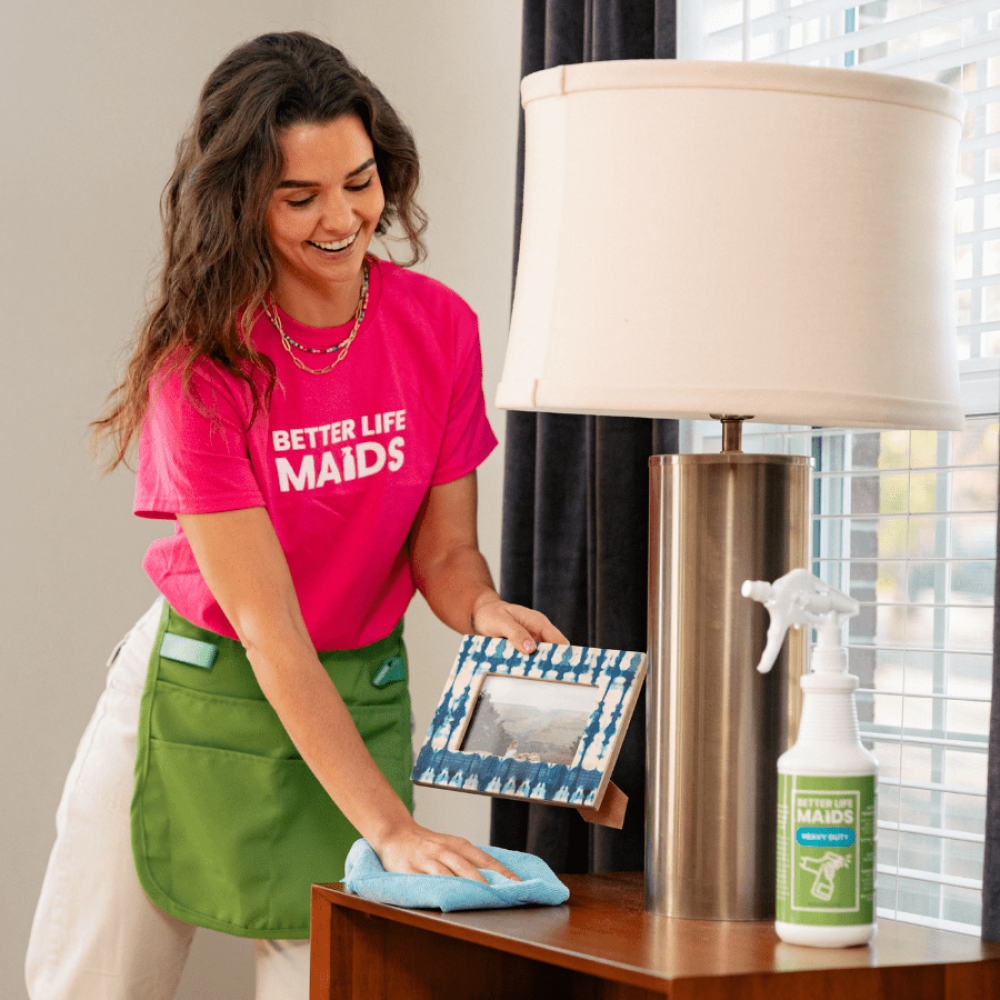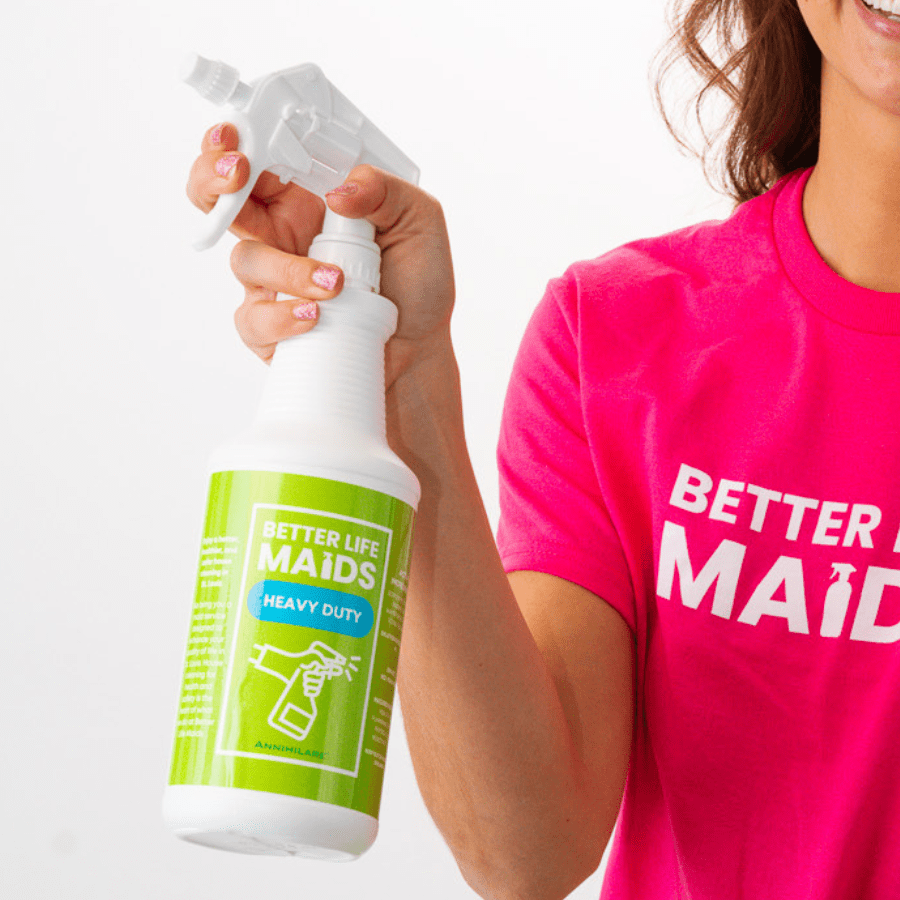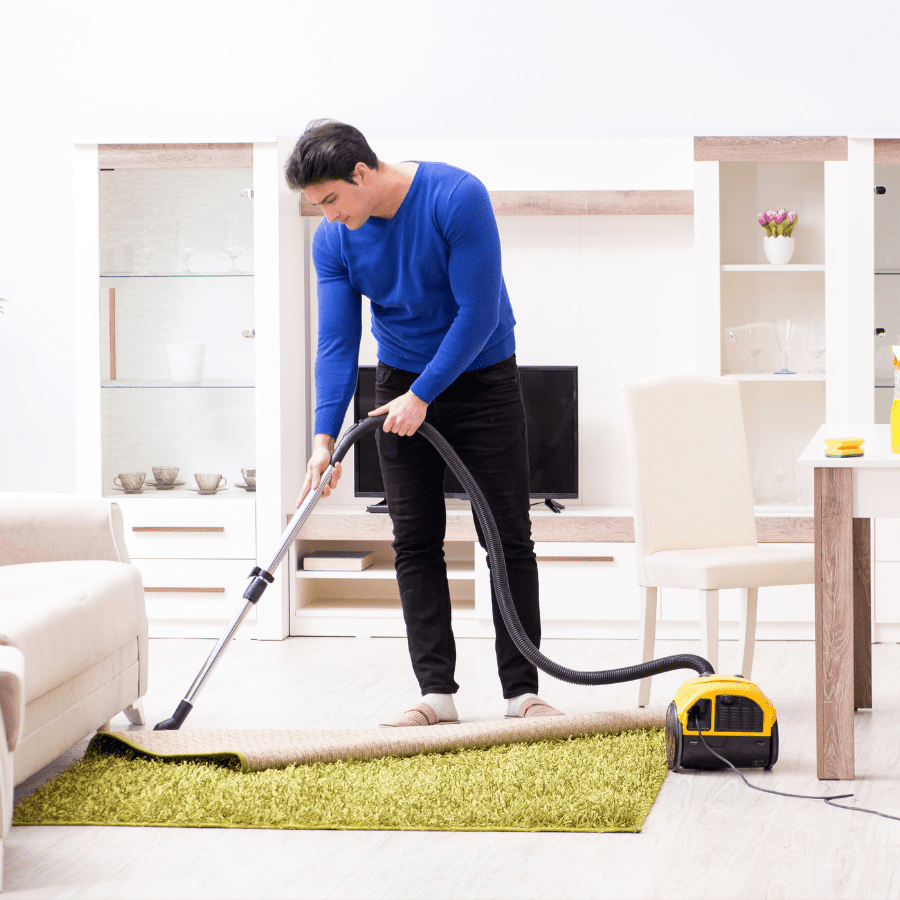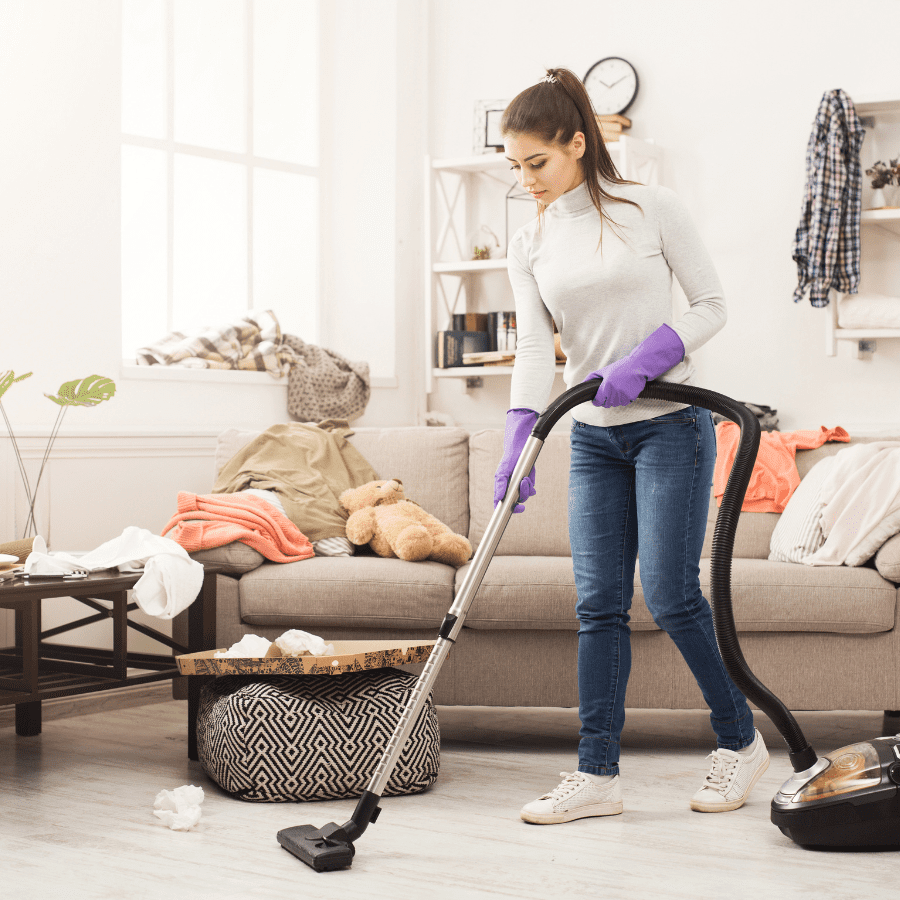Streamlining Your Cleaning: 5 Stage Breakdown

Cleaning is an essential part of our daily lives, whether we’re tidying up our homes, maintaining cleanliness in the workplace, or practicing good personal hygiene. But have you ever wondered if there’s a more efficient way to clean? Streamlining your cleaning routine with an effective cleaning method can not only save you time and effort but also ensure that you’re effectively removing harmful microorganisms and maintaining a clean and healthy environment.
In this blog, we’ll break down the cleaning process into five stages and explore how each stage contributes to a thorough and efficient cleaning routine. From preparation and pickup to disinfecting, we’ll provide insights into the key tasks, techniques, and benefits of each stage. Whether you’re a homeowner looking to streamline your cleaning tasks or a business owner aiming to create a safe and hygienic environment for your customers and employees, following an effective cleaning procedure is crucial for health and safety reasons. This blog will provide valuable information to help you optimize your cleaning routine.
So, let’s dive into the world of cleaning and discover how you can streamline your cleaning process for maximum effectiveness and efficiency.
The Importance of a Structured Approach
Implementing a structured approach to cleaning is essential for several reasons. Firstly, it ensures that all areas are thoroughly cleaned and no important tasks are overlooked. By breaking down the cleaning process into stages, you can focus on specific aspects of cleaning, such as preparation, pickup, dusting, cleaning, and disinfecting. This helps to streamline the cleaning routine and ensures that no area is neglected.
Secondly, a structured approach improves efficiency by optimizing the use of time and resources. By following a specific cleaning procedure, you can minimize the time spent on each task and maximize your productivity. This is particularly important in commercial settings where time is of the essence and cleaning needs to be done quickly and effectively.
Lastly, a structured approach enhances the safety of the cleaning process. By following a risk assessment and specific cleaning procedures, you can identify and minimize potential hazards. This helps to protect both yourself and others from accidents, injuries, and exposure to harmful substances.
In summary, a structured approach to cleaning is important for thoroughness, efficiency, and safety. It ensures that all areas are properly cleaned, optimizes time and resources, and minimizes risks and hazards.

Key Benefits of Streamlining Your Cleaning Routine
Streamlining your cleaning routine offers several benefits that can enhance your overall cleaning experience and improve the cleanliness of your surroundings. Here are some key benefits of adopting a structured approach to cleaning:
- Thoroughness: By following a systematic cleaning process, you can ensure that all areas are thoroughly cleaned and no important tasks are overlooked. This helps to maintain a clean and healthy environment.
- Efficiency: Streamlining your cleaning routine allows you to optimize the use of time and resources. By breaking down the cleaning process into stages, you can focus on specific tasks and complete them more efficiently.
- Time-saving: With a structured approach, you can minimize the time spent on each cleaning task. This allows you to complete your cleaning routine more quickly, giving you more time for other activities.
- Peace of mind: A streamlined cleaning routine gives you the confidence that you’re effectively removing harmful microorganisms and maintaining a clean and hygienic environment.
Stage 1: Preparation and Pickup Phase
The first stage of the cleaning process is the preparation and pickup phase. This phase involves assessing the area to be cleaned, gathering the necessary tools and equipment, and re-organizing home items. It sets the foundation for the rest of the cleaning process and ensures that the subsequent stages are carried out effectively.

First, pickup all items that are not in their correct area. This usually means clothing, toys, dishes, and others. try and take them to their final destination, meaning take them where they actually belong instead of just moving them out of the way.
Next. gather all the necessary tools and equipment for the cleaning tasks. This may include cleaning solutions, microfiber cloths, mops, vacuum cleaners, and any other tools. Having all the necessary tools readily available will help to streamline the cleaning process and save time.
Tips for Efficient Pickup and Decluttering
- Start by decluttering the area before picking up loose debris. Remove any items that don’t belong in the space to create a clean and organized environment.
- Use a designated container or bag to collect and dispose of the debris. This will help to keep the area clean and prevent the spread of dirt and dust.
- Work systematically, focusing on one area at a time. This will help you stay organized and ensure that no spot is missed.
- Use efficient tools such as a broom, dustpan, or vacuum cleaner to remove loose debris. Choose tools that are suitable for the surface you’re cleaning to achieve the best results.
- Consider using a microfiber cloth or mop for picking up smaller debris and dust. Microfiber is highly effective at trapping dirt and dust particles, making it an excellent choice for thorough cleaning.
Stage 2: Dusting Phase
To start the dusting phase, begin with the ceiling. Dust the fan or light, corners of the room, and other ceiling related things. When cleaning, beginning at the ceiling is crucial. This helps to not move dust onto other already cleaned surfaces. Next, choose a wall and dust the various things from top to bottom. Continue around the room in this way working left to right, top to bottom, until you’ve come back to where you began. Remember to clean soft surfaces, such as carpet, bedding, and upholstery, according to the manufacturer’s instructions.

Speed Cleaning Techniques
Speed cleaning techniques can help you efficiently tackle cleaning tasks during the dusting phase. These techniques allow you to clean effectively and save time, making your cleaning routine more efficient. Here are a few speed cleaning tips to consider:
- Prioritize tasks: Start with the most important or time-sensitive tasks/room first. This helps you address critical cleaning needs and ensures that you complete essential tasks within the allocated time.
- Use multipurpose cleaning products: Opt for cleaning solutions that can be used on multiple surfaces. This saves you time and effort by eliminating the need to switch between different products.
- Work in sections: Divide larger areas into smaller sections and clean one section at a time. This helps you stay organized and prevents you from feeling overwhelmed by the cleaning tasks.
- Develop a routine: Establish a consistent cleaning routine that works for you. Having a routine helps you become more efficient over time as you become familiar with the tasks and their requirements.
What to Avoid During the Dusting Phase
During the dusting phase of the cleaning process, it’s important to be aware of common mistakes that can hinder the effectiveness of your cleaning routine. By avoiding these mistakes, you can ensure that your cleaning efforts are successful and that you maintain a clean and healthy environment. Here are some common mistakes to avoid:
- Rushing through cleaning tasks: Taking your time and being thorough is important to achieve effective results. Rushing through tasks can lead to overlooked areas and incomplete cleaning.
- Using the wrong cleaning products: Ensure that you are using the appropriate cleaning products for each surface. Using the wrong products can damage surfaces or fail to effectively remove dirt and germs.
- Neglecting high-touch surfaces: High-touch surfaces, such as light switches and door handles, are hotspots for germs and bacteria. Make sure to give these surfaces extra attention during the dusting phase.
- Forgetting to change cleaning tools: Regularly changing cleaning cloths, sponges, and mop heads is important to prevent the spread of germs. Dirty tools can transfer bacteria from one surface to another.
- Not following manufacturer’s instructions: It’s crucial to read and follow the instructions provided by the manufacturer for cleaning products. Using products incorrectly can reduce their effectiveness and potentially damage surfaces.
Stage 3: Cleaning Phase
The third stage of the cleaning process is the cleaning phase. This phase focuses on scrubbing, and using appropriate cleaning chemicals, tools, and techniques to remove dirt, grime, and stains from surfaces. It is an important stage for achieving a clean and visually appealing environment.
During the cleaning phase, choose the right cleaning supplies for the surfaces you are cleaning. Different surfaces may require different cleaning solutions, so it’s important to use products that are suitable and effective for each surface.

Hot water is often a useful tool during the cleaning phase. It can help to loosen dirt and grime and make the cleaning process more effective. However, be cautious when using hot water on delicate surfaces that may be sensitive to heat.
By using the appropriate cleaning chemicals, tools, and hot water when necessary, you can effectively remove dirt and grime during the cleaning phase, leaving surfaces clean and refreshed.
Choosing the Right Cleaning Supplies
Choosing the right cleaning supplies is crucial for effectively cleaning different surfaces. By using the appropriate cleaning products, you can ensure that surfaces are thoroughly cleaned and free from dirt, grime, and bacteria. Here are some tips for choosing the right cleaning supplies:
- Read labels and instructions: Before using any cleaning product, read the labels and instructions carefully. This will help you understand the appropriate usage and any precautions that need to be taken.
- Consider surface compatibility: Different surfaces may require different cleaning solutions. For example, wood surfaces may require a specific wood cleaner, while glass surfaces may require a glass cleaner. Ensure that the cleaning supplies you choose are compatible with the surfaces you’re cleaning.
- Opt for eco-friendly options: If possible, choose eco-friendly cleaning products that are environmentally friendly and safe for both you and the environment.
- Test on a small area: Before using a new cleaning product on a large surface, test it on a small, inconspicuous area to ensure that it doesn’t cause any damage or discoloration.
By carefully selecting the right cleaning supplies, you can achieve effective cleaning results while protecting the surfaces you’re cleaning.
Stage 4: Disinfecting Phase
The fourth stage of the cleaning process is the disinfecting phase. This phase focuses on using a chemical disinfectant to destroy bacteria and other microorganisms on surfaces. Disinfecting is particularly important for maintaining a safe and hygienic environment, especially in high-traffic areas and during times of increased illness.
During the disinfecting phase, choose a suitable chemical disinfectant that is effective against a broad range of microorganisms. Follow the manufacturer’s instructions to ensure the proper level of disinfectant is achieved and the required contact time is met.

It’s important to note that disinfecting eliminates the majority of bacteria and microorganisms, but it may not completely eliminate all of them. However, it significantly reduces the risk of illness-causing bacteria and creates a safer environment for everyone.
By incorporating the disinfecting phase into your cleaning routine, you can effectively reduce the presence of harmful bacteria and other microorganisms, contributing to a clean and hygienic environment.
What is the Difference between Cleaning and Disinfecting?
Cleaning and disinfecting are two terms that are often used interchangeably but have different meanings. Understanding these differences is important for maintaining a clean and safe environment. Cleaning refers to the removal of visible dirt, debris, and contaminants from a surface. It involves using cleaning agents, such as soap and water, to physically remove dirt and germs.
Cleaning helps to make the surface visually clean and prepares it for further cleaning processes. Disinfecting, on the other hand, goes beyond cleaning. It involves the use of chemicals or heat to kill or destroy microorganisms, including bacteria, viruses, and fungi. Disinfecting is important for reducing the risk of infections and preventing the spread of harmful germs.
While cleaning is an essential first step in maintaining cleanliness, disinfecting is crucial for ensuring that surfaces are thoroughly disinfected and free from harmful microorganisms. Both cleaning and disinfecting play important roles in maintaining a clean and safe environment.
Safe and Effective Disinfection Methods
When it comes to disinfection, there are several safe and effective methods that can be used to kill or destroy microorganisms on surfaces. The choice of method depends on the type of surface and the level of disinfection required.
Heat disinfection is one method that can be used to kill microorganisms. This can be done through steam cleaning or using high temperatures to disinfect surfaces. Heat can effectively kill bacteria, viruses, and fungi, but it may not be suitable for all surfaces.

Chemical disinfection is another common method that involves the use of disinfectants to kill microorganisms. Disinfectants can be used in various forms, such as sprays, wipes, or solutions. It’s important to choose a disinfectant that is appropriate for the surface and follow the manufacturer’s instructions for proper use.
Ultraviolet (UV) disinfection is a method that uses UV light to kill or inactivate microorganisms. UV light can be effective in disinfecting surfaces, but it requires proper equipment and knowledge to ensure effective disinfection.
It’s important to remember that disinfection is just one part of the cleaning process. Proper cleaning and preparation of the surface before disinfection is essential for effective disinfection. Following the recommended methods and guidelines for disinfection will help ensure the safety and effectiveness of your cleaning activities.
Stage 5: Staging Phase
The fifth stage of cleaning, also known as the staging phase. This stage focuses on the final touches to enhance the presentation of the cleaned area.
During the staging phase, attention is given to details such as arranging furniture, organizing belongings, and ensuring that the area looks clean and inviting. This stage plays a crucial role in creating a positive impression and maintaining cleanliness in both residential and commercial settings.
By paying attention to the staging phase, you can ensure that the cleaning process is complete and that the area is ready for use. This final stage of cleaning helps to maintain cleanliness and keep the environment tidy and presentable.

Final Touches to Enhance Presentation
In the final stage of cleaning, also known as the staging phase, it’s important to pay attention to the details that enhance the overall presentation of the cleaned area. These final touches not only make the space look visually appealing but also contribute to maintaining cleanliness.
Some final touches to consider include arranging furniture in an orderly manner, organizing belongings, and ensuring that surfaces are free from dust and dirt. Paying attention to these details helps create a clean and inviting environment.
In residential settings, the staging phase might involve making beds, fluffing pillows, and adding decorative touches or lighting a candle to create a welcoming atmosphere. In commercial settings, it could involve ensuring that workstations are organized, display areas are clean, and signage is properly positioned.
By focusing on these final touches, you can create a positive impression and contribute to the overall cleanliness and presentation of the space.
Maintaining Cleanliness Post-Cleaning
Maintaining cleanliness is an ongoing process that requires regular attention and effort. After completing the cleaning process, it’s important to establish good habits and practices to ensure that the area remains clean.
Some tips for maintaining cleanliness post-cleaning include:
- Regular cleaning: Establish a cleaning schedule to ensure that cleaning tasks are carried out on a regular basis. This will help prevent dirt and grime from building up and keep the area clean.
- Proper storage: Ensure that items are properly stored and organized to prevent clutter and make cleaning easier. Use storage solutions such as bins, shelves, and hooks to keep items off the floor and organized.
- Clean as you go: Encourage everyone in the space to clean up after themselves and take responsibility for maintaining cleanliness. This includes cleaning up spills, wiping down surfaces, and disposing of trash properly.
- Regular inspections: Conduct regular inspections to identify any areas that may need additional cleaning or attention. This will help address any issues before they become major problems.

Conclusion
In conclusion, streamlining your cleaning routine not only saves time but also ensures a more thorough and effective process. By following a structured approach and dividing the cleaning into stages, you can achieve a cleaner and healthier living environment with ease. Remember to gather the necessary tools, employ efficient cleaning techniques, choose the right supplies, and maintain cleanliness consistently for long-lasting results. Embrace these tips to streamline your cleaning process and enjoy a tidier space effortlessly. If you are looking for help in your cleaning routine, book with Better Life Maids to get more time back to do what you love. Happy cleaning!
Frequently Asked Questions
What Are the Most Efficient Cleaning Tools?
The most efficient cleaning tools are those that are effective in removing dirt and germs while also being safe and convenient to use. Reusable cleaning products, such as microfiber cloths and mop heads, are environmentally friendly and can be washed and reused. It’s important to follow the manufacturer’s guidance for using these products and to choose tools that are suitable for the specific cleaning task at hand. In a commercial setting, using efficient cleaning tools can help streamline the cleaning process and ensure that surfaces are thoroughly cleaned and disinfected.
How Often Should Each Cleaning Stage Be Performed?
The frequency of each cleaning stage depends on several factors, including the level of dirt and contamination, the type of surface, and the specific cleaning requirements. It’s important to follow safe cleaning procedures, including the proper use of cleaning agents and tools, as well as the manufacturer’s instructions. In some cases, there may be legal requirements or industry standards that dictate how often certain cleaning stages should be performed. Regular cleaning and disinfection are essential for maintaining a safe and healthy environment and reducing the risk of infections.